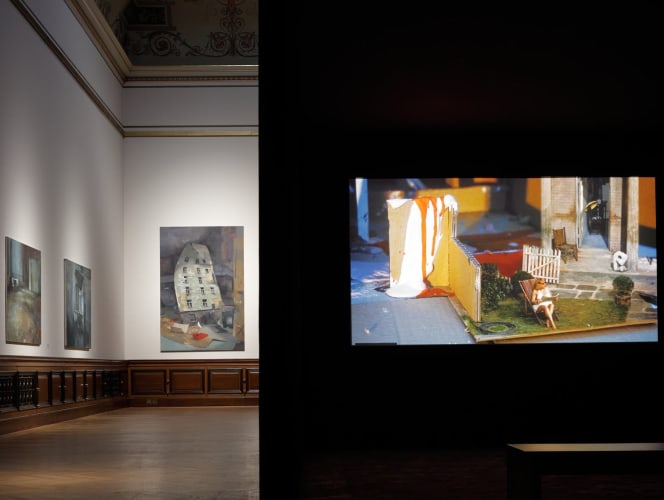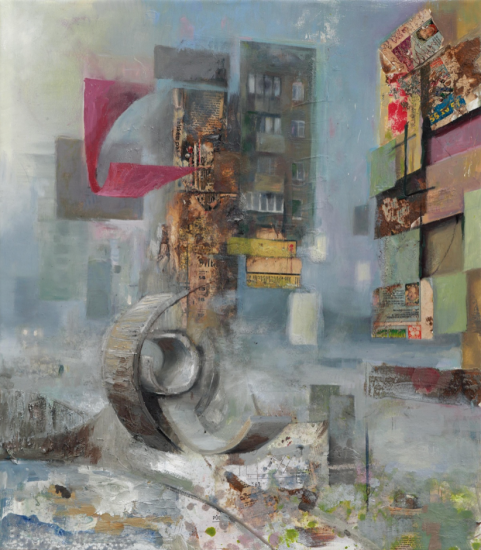

hunt kastner is pleased to present a new body of work by Daniel Pitín (*1977, Prague) in his fourth solo exhibition at the gallery. Pitín creates visually complex paintings with dense symbolism and references to canonic works of art, architecture and late-modern aesthetics. His dark palettes, ethereal figures, and surreal structures both hide and reveal. He describes his paintings as fragments of stories and dreams through which he explores personal and collective memory. The principles behind his paintings are also found in his collages and films, which are characterized by the use of found materials such as personal family and historical archives, online sources, and cinematic references. The curious title of this exhibition, The Newcomers Association, sets the scene, one where we are perhaps hosting newcomers from the future to our internal world created by memories which are layered, at once obscured and amplified in layers of meaning – trying to make them feel at home, while still awkwardly navigating it all ourselves.
“My current exhibition deals with the theme of the future, but more with the concept itself rather than with any particular vision of the future. I don’t want to create a scientific forecast of the future with ecological or socio-economic predictions. What will shape our future is probably already somehow embedded in our present and our past. That is why my paintings contain layers, structures, made up of scraps of old newspapers and magazines or letters. These paper fragments form the new matter of the painting, layers that are also a symbolic message to future generations.
What began to become essential in the course of thinking about the exhibition was the process of alienating a familiar image or idea. The figures are thus often anonymous and faceless, formed only by means of a sign and simple geometric shapes. For the most part I use photographs from the internet, fragments of film footage or personal archives as inspiration. Then, using models made of paper and cardboard in my studio, I create reconstructions of these spaces and places that caught my eye in the photographs and became embedded in my memory. In this process, something always begins to be lost and alienated from the original sources, and so the images gradually free themselves from their original contexts and become my new idea of the future. I release these reworked images into the viewer’s field of vision for their own interpretation.
I imagine the future as being penetrated by some principle of uncertainty, unexpectedness and the unknown, thus breaking down the entrenched structures of perception of the present. Shapes or objects appear in my paintings that are familiar to our senses, but in a new context can appear unsettling or even alienating. The search for this boundary between the familiar and the unfamiliar has been the main motif of my work. I imagine a future society of people who live in the fragments and legacies of our culture, but enjoy them in a completely different way, not really understanding it. This misunderstanding and unfamiliarity frees my imagination from the contexts of the present and thus liberates a whole range of unconscious perceptions.”